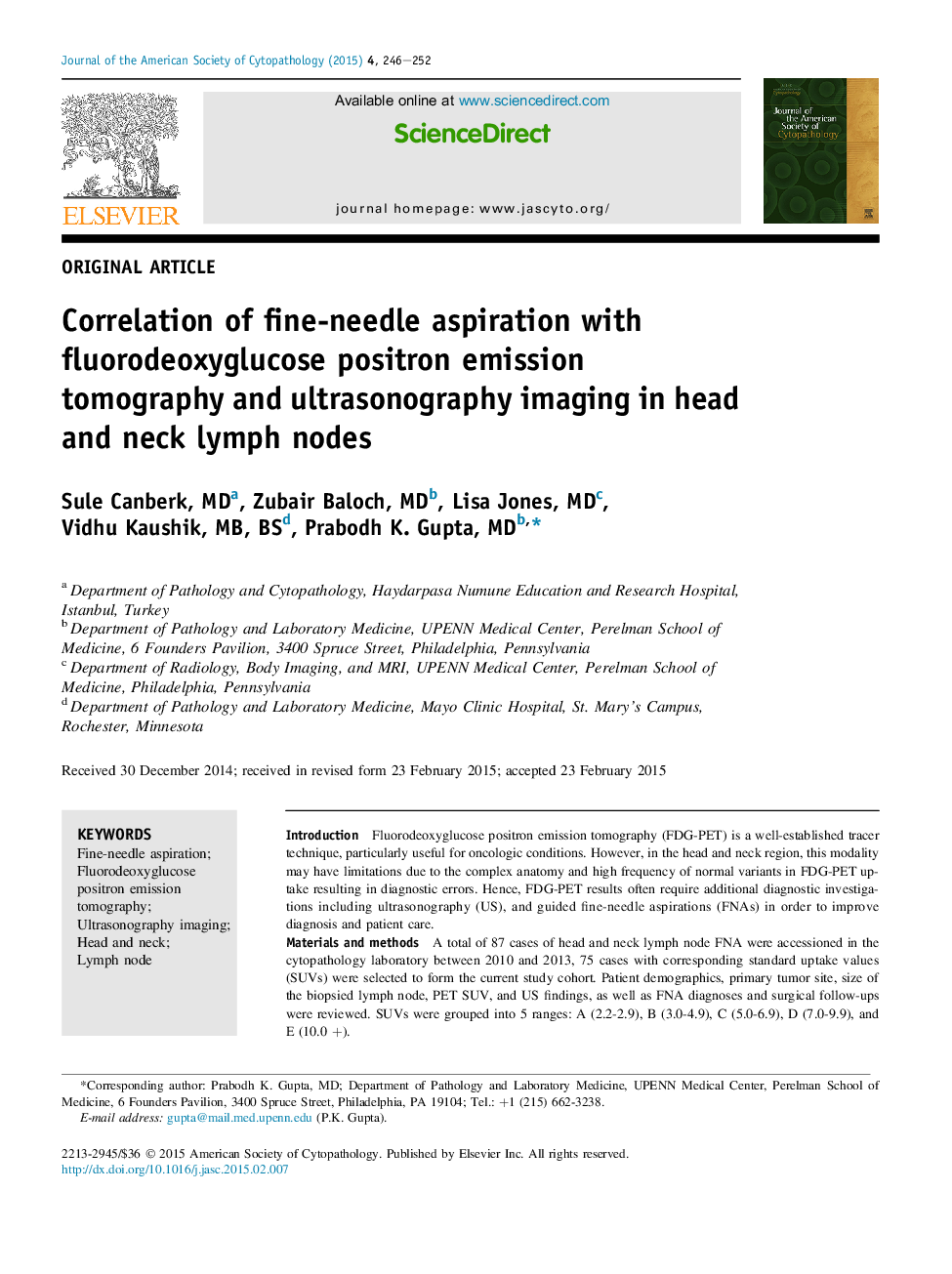| Article ID | Journal | Published Year | Pages | File Type |
|---|---|---|---|---|
| 2776568 | Journal of the American Society of Cytopathology | 2015 | 7 Pages |
IntroductionFluorodeoxyglucose positron emission tomography (FDG-PET) is a well-established tracer technique, particularly useful for oncologic conditions. However, in the head and neck region, this modality may have limitations due to the complex anatomy and high frequency of normal variants in FDG-PET uptake resulting in diagnostic errors. Hence, FDG-PET results often require additional diagnostic investigations including ultrasonography (US), and guided fine-needle aspirations (FNAs) in order to improve diagnosis and patient care.Materials and methodsA total of 87 cases of head and neck lymph node FNA were accessioned in the cytopathology laboratory between 2010 and 2013, 75 cases with corresponding standard uptake values (SUVs) were selected to form the current study cohort. Patient demographics, primary tumor site, size of the biopsied lymph node, PET SUV, and US findings, as well as FNA diagnoses and surgical follow-ups were reviewed. SUVs were grouped into 5 ranges: A (2.2-2.9), B (3.0-4.9), C (5.0-6.9), D (7.0-9.9), and E (10.0 +).ResultsThe SUV cutoff of 5.0 was seen in the groups C, D, and E, which increased the probability of malignancy in the FNA specimens from 67% to 100%. The average size of the lymph nodes was 18.57 mm (range 6-41 mm); it was 13.4, 14.2, 19.7, 18.4, and 20.2 for groups A, B, C, D, and E, respectively. The lymph node measurements represented similarities in groups A and B (13.4, 14.2), and groups C, D, and E (19.7, 18.4, 20.2). Albeit a few exceptions, an increase in the lymph node size 14.2 to 19.7 (ie, from groups A and B to groups C, D, and E) correlated with SUV and US abnormalities. Abnormal US findings were pronounced (100%) in group E, and ranged between 67% and 73% of the cases in other groups.ConclusionsThis study documents the usefulness of SUV range in FDG-PET results and not an absolute “cutoff” number for diagnosing suspicious head and neck lymph nodes due to an overlap in the SUVs between malignant and benign lesions. False positive and negative results may occur in hyperplastic and necrotic lymph nodes. An increase in the lymph node size generally compares well with SUVs and US abnormalities; use of US-guided FNAs in these cases can be helpful to achieve definite diagnosis.
